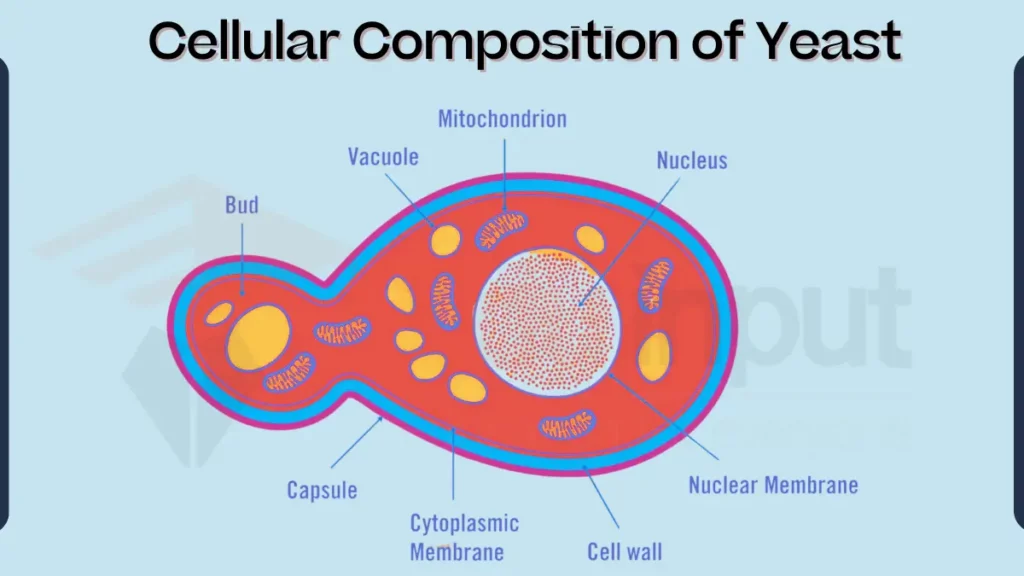Yeast Cell Structure
Yeasts are single-celled eukaryotic organisms that exhibit a complex cellular organization, similar to more complex plant and animal cells. Despite their microscopic size, yeast cells have organelles that carry out essential functions for their survival and growth.

Cellular Components
Here are the key cellular components of Yeast:
1. Cell Wall
The cell wall is the outermost layer of the yeast cell. It is comprised of 0.1 – 0.2 μm thick layers of chitin, glucans and mannans, glycoproteins, polysaccharides, and mannoproteins. The cell wall provides structural support, protects the cell from environmental stresses, and maintains cell integrity.
2. Vacuole
The vacuole is a large internal sac-like organelle that occupies about 20% of the cell’s volume. It plays important role in protein breakdown, nutrient storage, maintaining cellular pH balance, and regulating cell size.
3. Mitochondria
Mitochondria are often referred to as the “powerhouses” of the cell. They are responsible for generating energy through oxidative phosphorylation. Mitochondria convert energy from nutrients into adenosine triphosphate (ATP), the cell’s primary energy currency.
4. Endomembrane System
The endomembrane system is a network of interconnected membranes that coordinates various cellular processes, including protein synthesis, lipid synthesis, and transport of molecules within the cell. It comprises the endoplasmic reticulum, Golgi apparatus, and ribosomes.
Yeasts vs. Mold and Bacterial Cells
Yeast cells share similarities with mold cells, including rigid walls with chitins and glucans. But molds grow as multicellular filaments while yeasts form singly. Compared to bacteria, yeast cell walls prove less flexible but utilize similar plasma membranes comprised of phospholipids and proteins.



Leave a Reply